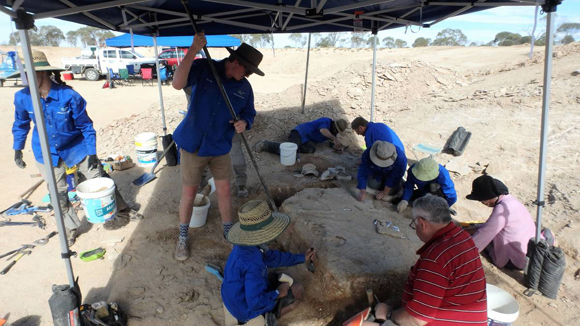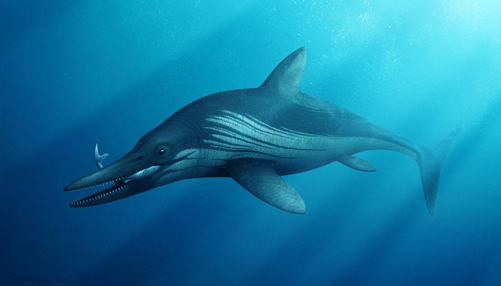Annual Australian Fossil Dig Finds a Fish Lizard Fossil
Each year volunteers as well as experienced field team practitioners and palaeontologists join forces in the Richmond area of Queensland (Australia), to take part in the annual “Big Dig”. The area surrounding the town of Richmond was once part of a large, inland sea (Eromanga Sea). Numerous fossils of marine reptiles and other vertebrates have been found and this year, the volunteers have helped with the excavation of a sizeable ichthyosaur specimen.
Digging Up an Ichthyosaur
This part of Australia presents a challenge for fossil hunters, the area, like most of Australia, has suffered from a prolonged drought, only partially relieved by a short period of seasonal rain that fell a few months ago. Normally, the ground is baked hard making excavations almost impossible and the temperature can rocket in the Antipodean summer (the winter months in the Northern Hemisphere), with daily temperatures exceeding 40 degrees Celsius. As a result, fieldwork tends to be restricted to the slightly cooler months of June, July and August (Southern Hemisphere winter).
Several fascinating discoveries have been made recently, including the discovery of a bizarre, Cretaceous bird that may have filled the same ecological niche as seagulls today.
To read Everything Dinosaur’s 2017 article about the discovery of the fossils of a prehistoric bird: Prehistoric Seagull from the Outback.
Field Team Members Busy Excavating the Ichthyosaur Specimen

Picture credit: Michelle Johnston
Volunteers Helping with Marine Reptile Excavation
This year’s dig involved more than a dozen volunteers and experienced researchers from Kronosaurus Korner. Staff from Kronosaurus Korner organise this annual event and many of the specimens found are prepared and put on display at their museum, which is home to one of the largest collections of Cretaceous marine fossils in Australia.
Kronosaurus Korner curator, Michelle Johnston, explained that a block of stone about 1.8 metres square containing the specimen would be transported back to the museum so that the fossil bones can be properly prepared. It will take several months of painstaking work to extract the fossils from the surrounding matrix but hopefully, when all the work has been completed, the new ichthyosaur specimen will be put on display.
An Illustration of a Typical Ichthyosaur

Picture credit: Bob Nicholls @Paleocreations
We wish all the team members every success with their excavations.
Visit the Everything Dinosaur website: Everything Dinosaur.






Leave A Comment